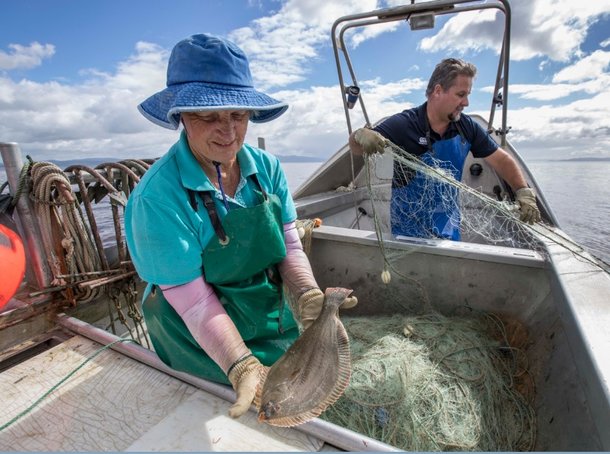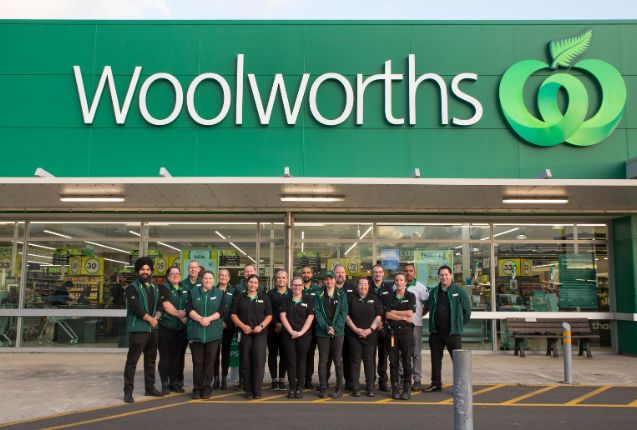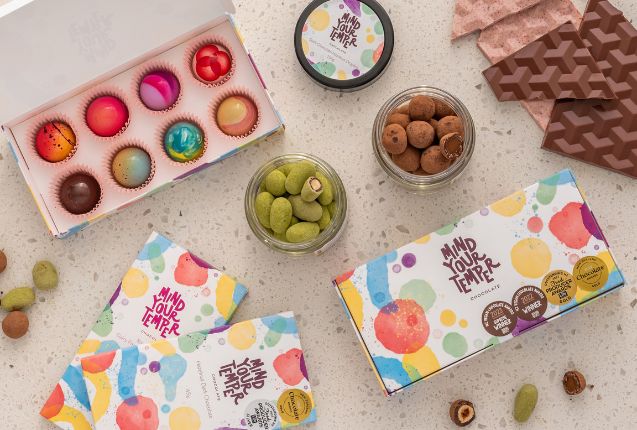
David Jose grew up in a fishing family and is Head of Seafood at Foodstuffs, which owns the New World, PAK’nSAVE and Four Square brands.
He says: “I think a lot of people have this perception that commercial fishing companies are these huge industrial operations with great big boats trawling the oceans. But that’s not necessarily the case in New Zealand. One of our best commercial fishermen is a young guy from South Auckland who fishes from a small trailer boat.”
The backwaters of the Manukau Harbour were Brendan Taylor’s childhood playground. He could amuse himself for hours by fishing for flounder with a small net.
Brendan says: “We’re a small family business based in Manurewa. My mother and I work on the boats and my wife takes care of the administration.”
Brendan’s mother Elda enjoys being part of the business and goes out on the boat with him in all weathers. The Taylors have three small boats, ranging from 4.5m to 6m, which they use to catch flounder, mullet, kahawai and spotted dog fish.
“Sustainability is an important part of our business plan,” Brendan says. “We regularly change our location and the species we target, so that no one fish species is being targeted year-round and the fish stocks have time to recover. We work with the small in-shore commercial fishing community to ensure mutual sustainability and farming of the different areas.
“We identify our target species before deploying our nets, so there is minimal bycatch. For example, flounder is caught in the shallow mud flats where other species do not tend to go. We use larger mesh sizes so the small fish can swim through the net, and minimal damage to the fish occurs. We handle our fish carefully and have developed systems to keep the fish as fresh as possible.”
Brendan’s catch is quickly processed and distributed to New World and PAK’nSAVE stores in the upper North Island.
David Jose says it’s hugely satisfying to be able to support small operators and sell fresh, locally caught fish to local customers.
“When Brendan’s fishing for us, in terms of flounder and kahawhai and mullet, it can be from ocean to plate within 24 hours. That’s a very speedy return, and that’s to the local supermarkets from where he’s catching the fish.
“Foodstuffs has had its own quota since 2000. It’s quite unusual – we’re the only supermarket company to invest in the industry. Most of the commercial fishing quota in New Zealand is held by large fishing companies and iwi. Having our own quota means that we can allocate it to small operators like Brendan, for the right species and in the right area, so that he’s catching what our customers want to buy – and in a sustainable way.”
Seafood facts
- Approximately 600,000 tonnes of seafood (excluding aquaculture) is harvested from New Zealand’s waters each year.
- The seafood industry employs 17,000 people.
- New Zealand’s marine fisheries waters (Exclusive Economic Zone and territorial sea) measures 4.4m km2, and is the world’s fourth largest EEZ, making it an ocean territory ‘superpower’.
- New Zealand’s 15,134 km long coastlineis the ninth longest in the world.
- 130species are commercially fished in New Zealand. 100 of those species are managed under the QMS in 638 stock areas.
- Maori own 50% of New Zealand’s fishing quota.
- Each year, the Ministry for Primary Industries reviews the Total Allowable Commercial Catch (TACC) for fish stocks and sets limits so that enough fish remain for breeding.
- 97% of New Zealand’s commercial catch is from sustainable stocks, according to Ministry for Primary Industries research.
- New Zealand became one of only two countries to achieve a top ranking in a review of fisheries management systems around the world in 2009, and in a second study, was ranked first among the 53 major fishing nations for managing marine resources.
Source: seafoodnewzealand.org.nz



